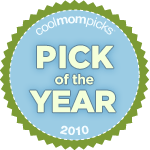
Whether you're a gourmet chef or a beginner cook there's one tool you're sure to have: a cutting board. If you use the same cutting board to cut raw meat that you use to chop your veggies, you could be flirting with disaster. When different types of foods (raw, fresh, or cooked) are prepared on the same board, there’s a great potential for cross contamination.
One way to make sure this doesn't happen is to have more than one cutting board on hand. It’s the only way to be completely sure you don’t run the risk of exposing yourself or your family to food poisoning.
One of the worst bacteria is E. coli - which is dangerous (and icky) for everyone, but potentially serious for young and elderly people. Even if you've used the same board for years and have never had a problem, it's time to think about changing your cutting board use.
At my house, we have a variety of cutting boards - big and small, plastic and wood. I keep them all in a big drawer in my kitchen so they're super handy. You'd never think I use them all, but I do! One for meat, one for seafood, one for chopping veggies, one for large fruits (like watermelon and pineapple), one for small fruits (lemons and limes), one for bread. I've been cooking like this for years. With proper care a cutting board can last for years and years.
Can you get away with using fewer cutting boards than me? Absolutely, but I would still have two - one for meats that is dishwasher safe and one for everything else.
Here's the skinny on all the varieties:
Wood boards
Best for vegetables, fruit, and bread. Try to avoid using wooden boards for cutting raw meat. Never soak wooden boards in water or put them in the dishwasher.
Bamboo boards
These are a great alternative to wooden cutting boards. Bamboo is actually a grass and can grow to harvest height in as little as 3 years. It continuously sends out new shoots, so it does not need replanting after harvesting. As such, it is a nice renewable resource. It can take 50-75 years for a maple tree to be big enough to harvest for cutting boards. Bamboo is also 15% harder than maple. They make very nice, durable cutting boards.
Plastic boards
These are great for meats. Plastic boards are the best for cutting meats because they can be popped into the dishwasher. Clean with soap and water or place in the dishwasher if you've cut raw meat, chicken, or fish on the board.
Flexible boards
These are great cutting boards and are very versatile. They're strong like plastic, but also bendable so you can easily pour veggies, etc. into a pot.
Glass boards
Glass boards are generally not a wise choice for a cutting board. That's because the glass dulls knife blades. Use them as a spot for placing hot pans, general food preparation, but not cutting. Clean by placing in the dishwasher.
Keep your kitchen healthy by keeping your cutting boards clean and by using different boards for different foods. If it's required of commercial kitchens to ensure our safety when we eat out, we should probably do it at home, too! And keep all your cutting boards super, super clean. They're they perfect environment for little bacteria critters to grow!
Happy chopping, slicing and dicing!












0 comments:
Post a Comment